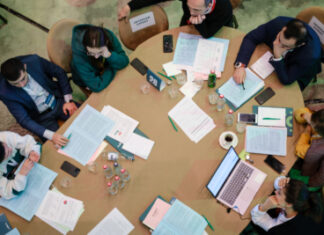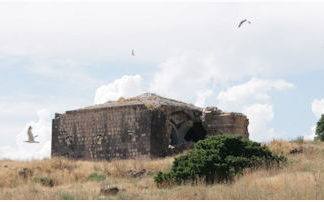
By Aram Arkun
Mirror-Spectator Staff
NEW YORK — “Night Over Erzinga,” a play by Adriana Sevahn Nichols, was presented at the Lark Play Development Center in midtown Manhattan on June 7-12. It was the first play to be created through Middle East America: A National New Plays Initiative, a program created in 2008 to support American playwrights of Middle Eastern descent through a $10,000 commission.
“Night Over Erzinga” is an intergenerational story that tells of the Armenian Genocide, its aftereffects and immigrant life in America. The story is given a different twist and parallel intergenerational line through the Dominican husband of the American-born daughter of the
Armenian Genocide survivors. Three and even four generations appear, sometimes simultaneously, on stage.
Ardavazt Khatchig Oghidanian fled Turkish persecution in Erzinga prior to the Genocide, and industriously working in America, began with various modest jobs, gradually improving his situation. He married Alice Hajian, a Genocide survivor from Shabin Karahisar, and had a daughter, Aghig. Alice was unable to shake off the horrors she witnessed, such as the rape and murder of her younger 8-year-old sister, Anoushig, by Ottoman soldiers, and the butchery of the rest of her family. Despite all of his efforts, Ardavazt was unable to overcome the psychological burdens placed on her, as well as his own trauma caused by the disappearance of his family in Erzinga. He harshly halted Alice’s efforts to explore dance as a means of self-expression. Alice descended into mental illness, and had to be institutionalized, with unfortunate results. Their daughter Aghig had to be placed in foster homes and orphanages for some six years.







